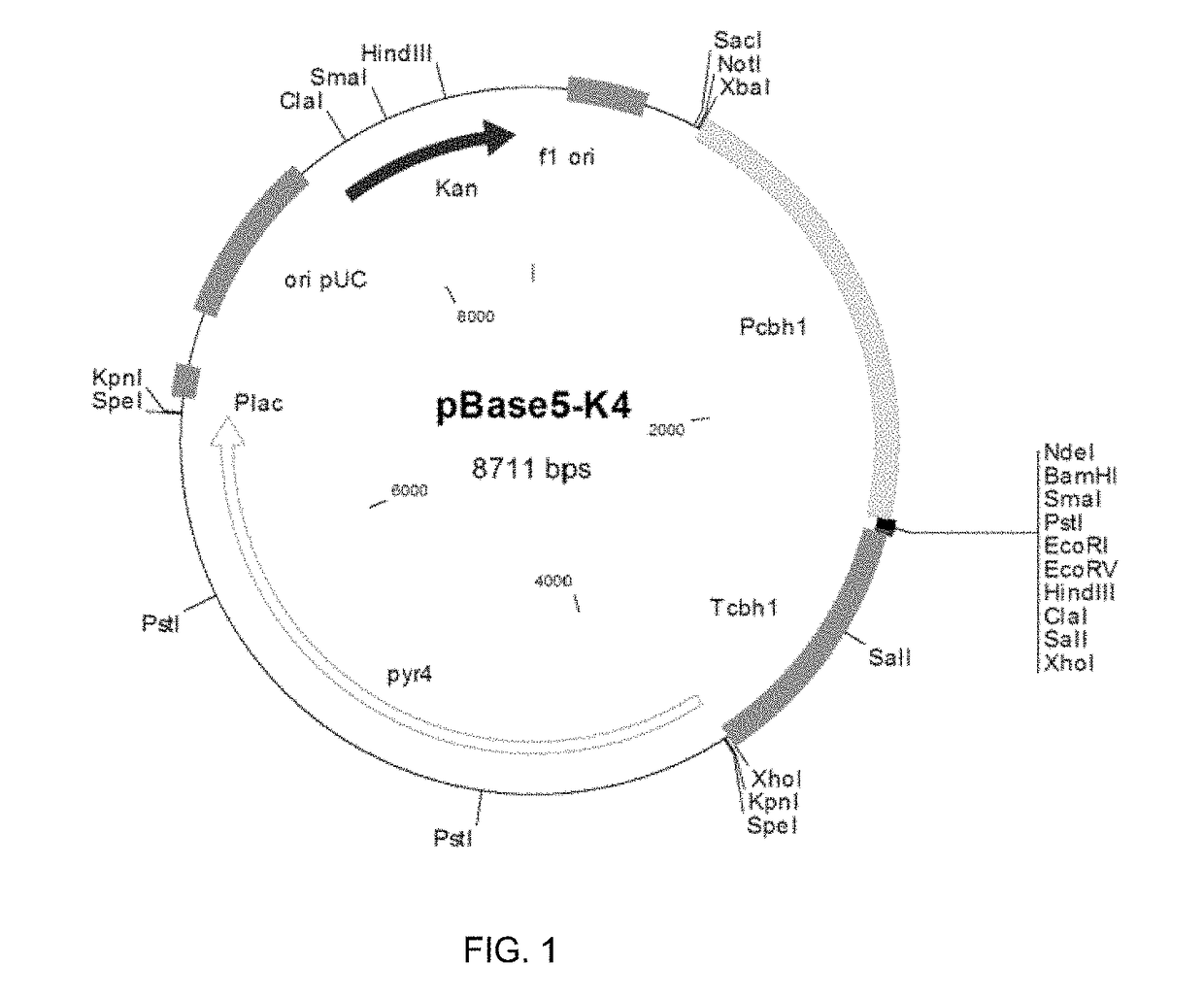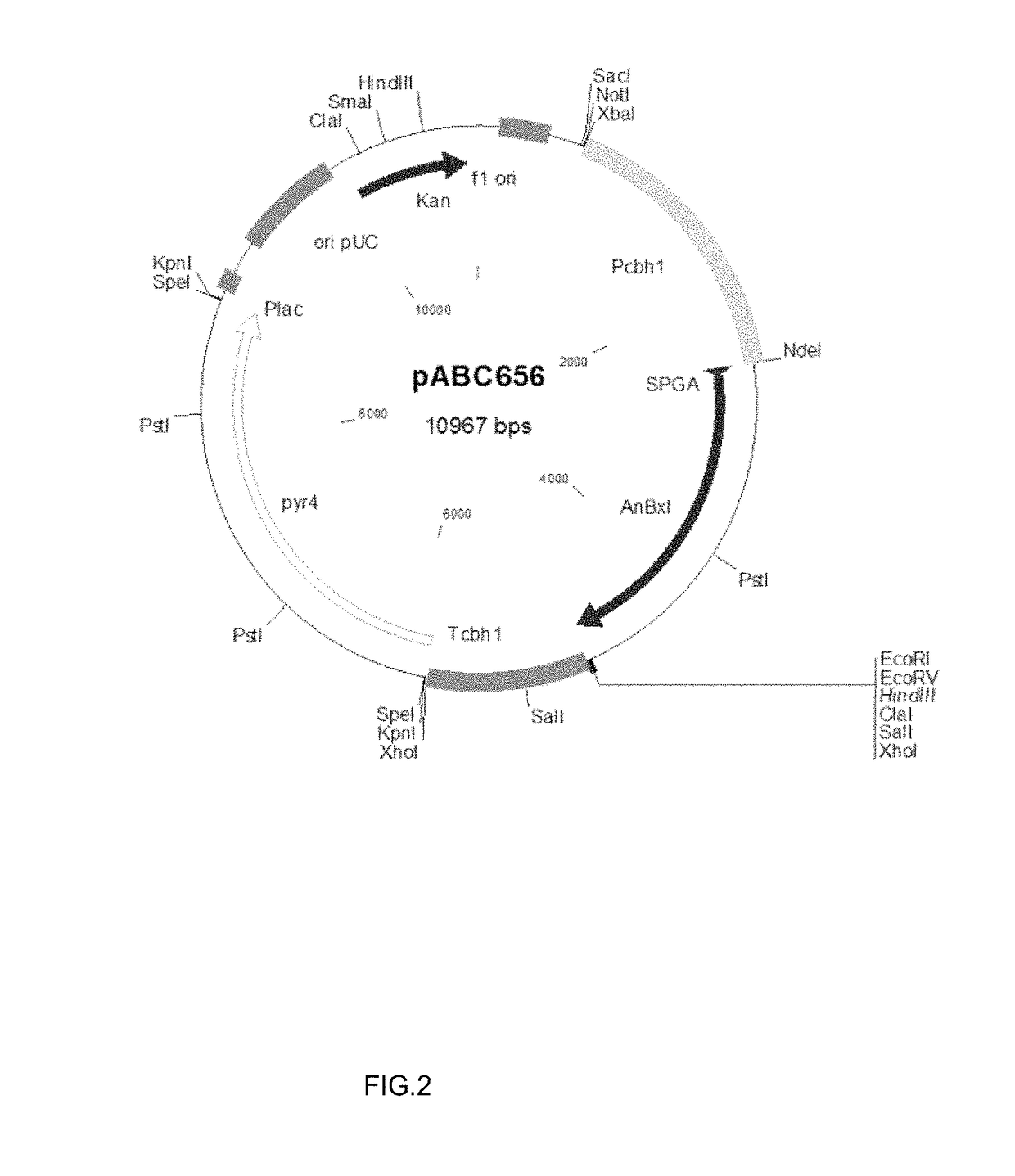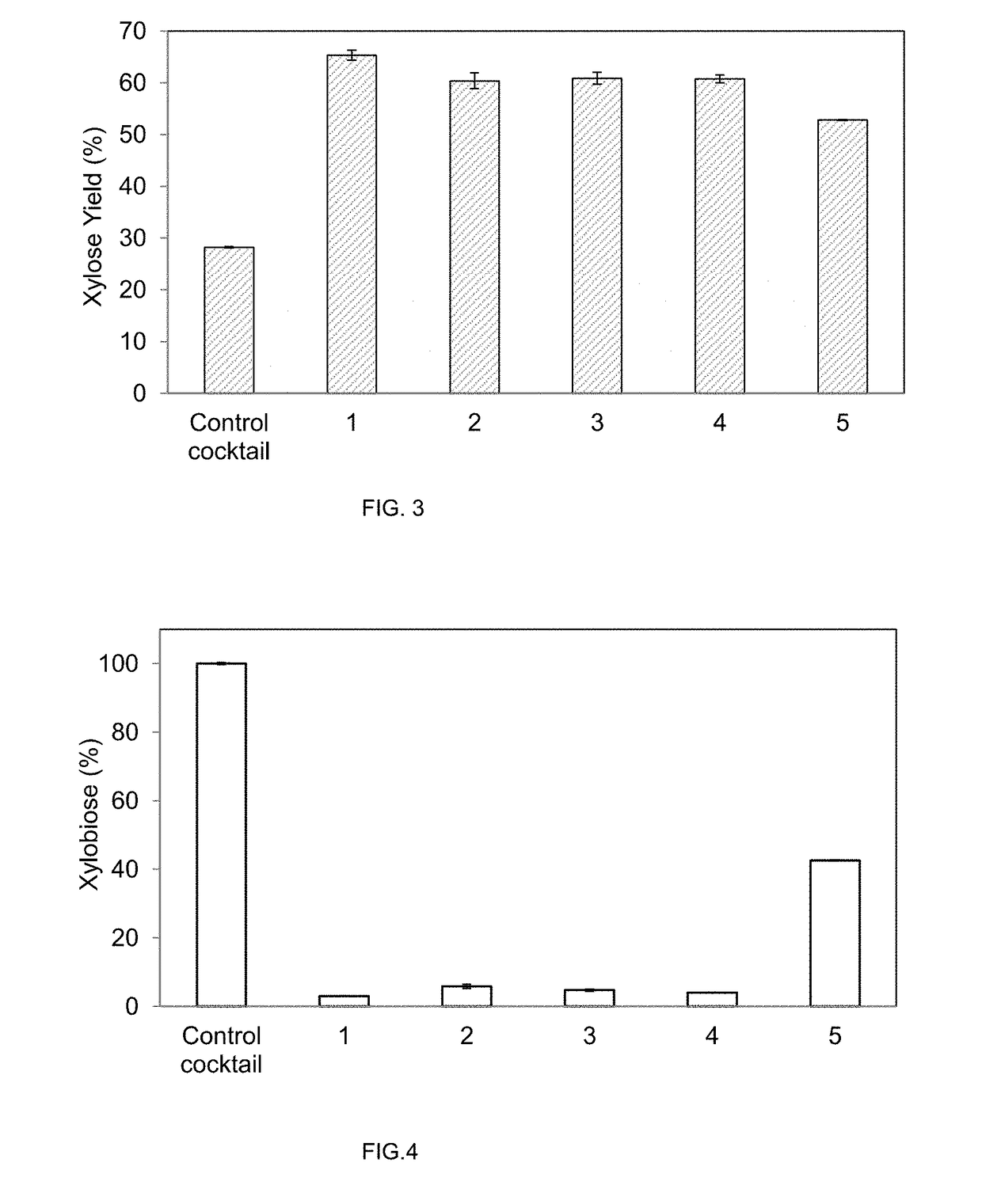Expression of recombinant beta-xylosidase enzymes
a technology of recombinant betaxylosidase and enzymes, which is applied in the direction of enzymes, liquid carbonaceous fuels, biochemistry apparatus and processes, etc., can solve the problems of reducing the yield of ethanol at the end of the fermentation process, not supporting the widespread use of biofuels, and under-utilizing the enormous potential energy of these carbohydrates
- Summary
- Abstract
- Description
- Claims
- Application Information
AI Technical Summary
Benefits of technology
Problems solved by technology
Method used
Image
Examples
example 1
Expression of Beta-Xylosidase AnBxl from A. nidulans with Signal Peptide of Glucoamylase A from A. awamori, in M. thermophila C1. Construction of the Expression Vector and Beta-Xylosidase Activity Analysis in M. thermophila Transformants
[0127]M. thermophila C1 is a good host for expressing and secreting heterologous proteins and polypeptides. The beta-xylosidase gene anbxl (AN8401.2, accession number: Q5ATH9) from A. nidulans was used to express the enzyme and test its enzymatic performance in the present invention.
[0128]The anbxl cDNA sequence was synthesized in vitro after optimization, leading to remove the recognition sites for the most common restriction enzymes without altering the amino acid sequence. The cDNA nucleotide sequence of anbxl and the deduced amino acid sequence are shown in SEQ ID NO: 4 and SEQ ID NO: 1 respectively. The coding sequence is 2289 in length by including the stop codon. The encoded predicted protein is 763 amino acids long with a predicted molecular ...
example 2
Beta-Xylosidase Activity Determination on Enzymatic Mixtures Produced by M. thermophila C1 and Transformants Expressing the SPGA-AnBxl
[0133]The SPGA-AnBxl transformants were inoculated in 96-well microtitter plates (MTPs) cultures to identify beta-xylosidase activity in transformants expressing anbxl. Hydrolytic activity on pNXP (Sigma N2132) as substrate was measured.
[0134]Most of the transformants tested showed an increase of beta-xylosidase activity compared to untransformed M. thermophila C1 control. All the transformants with beta-xylosidase activity were confirmed in a second round test as defined in U.S. Pat. No. 7,794,962B2. Some of the positive transformants were confirmed at flask scale (Verdoes et al., 2007, Ind. Biotechnol. 3 (1); Visser et al., 2011, Ind. Biotechnol. 7 (3)) and beta-xylosidase activity was measured from culture supernatants. Six different enzymatic cocktails were produced (see Table 1): a control from parent strain (control cocktail) and five transforma...
example 3
Effect of Transformants Expressing SPGA-AnBxl Cocktails on the Release of Xylose During the Enzymatic Hydrolysis of Xylan-Containing Biomass
[0140]Enzymatic Hydrolysis Experiments
[0141]Unwashed pretreated corn stover (PCS) was used as substrate for enzymatic hydrolysis. Pre-treatment of the biomass was performed by a modification of the steam explosion system described by Nguyen et al., 1998, Appl. Biochem. Biotechnol. 70-72, in which no acid treatment was applied so that xylan hydrolysis was impaired. Incomplete release of xylose from pre-treated material was necessary for the evaluation of the effect of the SPGA-AnBxl activity.
[0142]The compositional analysis of this material was performed accordingly to the Standard Biomass Analytical Procedures from National Renewable Energy Laboratory (NREL) (http: / / www.nrel.gov / biomass / analytical_procedures.html).
[0143]Hydrolysis of the pre-treated biomass (20 grams of total reaction mass) was performed in 100 mL ISO bottles. Water was added to...
PUM
| Property | Measurement | Unit |
|---|---|---|
| volume | aaaaa | aaaaa |
| temperature | aaaaa | aaaaa |
| temperature | aaaaa | aaaaa |
Abstract
Description
Claims
Application Information
 Login to View More
Login to View More - R&D
- Intellectual Property
- Life Sciences
- Materials
- Tech Scout
- Unparalleled Data Quality
- Higher Quality Content
- 60% Fewer Hallucinations
Browse by: Latest US Patents, China's latest patents, Technical Efficacy Thesaurus, Application Domain, Technology Topic, Popular Technical Reports.
© 2025 PatSnap. All rights reserved.Legal|Privacy policy|Modern Slavery Act Transparency Statement|Sitemap|About US| Contact US: help@patsnap.com



